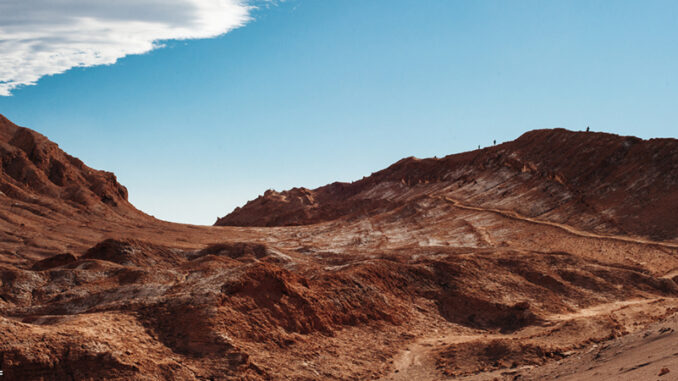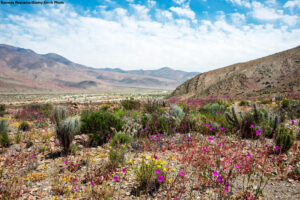
Everyone agrees that wildflowers are pretty. But did you know they might also provide scientists with valuable information–maybe even a link to learning how to make crops more drought-resistant in the future? Here, btw takes a closer look at one beautiful and very unusual wildflower bloom in South America.
A Wildflower Explosion
Located between the Andes Mountains and the Pacific Ocean, the Atacama Desert in Chile is the driest nonpolar desert on Earth. It also has one of the highest amounts of solar radiation and ultraviolet radiation anywhere on the planet. As a result, it’s one of the most hostile areas for life. But even so, right now, the desert is experiencing an explosion of more than two hundred species of wildflowers, some of which don’t grow anywhere else in the world.

A Record-Setting Year
Flower seeds remain dormant beneath the soil and need at least 15 millimeters (mms) of rain to reach the moisture threshold necessary to sprout and grow. Usually, the Atacama Desert only gets about two mms of rainfall per year. So, the seeds remain dormant. But during North America’s past summer months–which was winter in Chile–it was one of the wettest seasons on record. In fact, some higher-elevation areas received up to sixty mms of rain in the months of July and August alone. There was even a rare snowfall in June.
But water isn’t the only necessary ingredient necessary to grow; the seeds also need the right temperature, humidity, and number of hours of daylight. So, the fact that the desert floor is currently covered in a rainbow of colors of wildflowers is an unusual phenomenon. Tourists have come from all over Chile, some driving hundreds of miles to view them.
Why It Matters
But the flowers aren’t just notable for their beauty. They also hold very real scientific importance because they are so drought resistant. Climate change means that drought is becoming a more serious problem for agriculture all over the world. If scientists can learn what allows these flowers to grow in such harsh conditions, maybe they can use the knowledge to develop crops that do better in harsh conditions as well.
To this end, a team of scientists at Chile’s Andres Bello University is conducting experiments to map the flowers’ genetic sequencing. One of their discoveries is that the pata de guanaco, one of the most drought-resistant flowers, can switch between different types of photosynthesis depending on how much water it is able to receive.
This knowledge will be especially important for Chile. Chile is one of the most water-stressed countries in the world, and scientists have predicted that by 2050, there will be extreme drought conditions across its fertile central valley, which is a critical agricultural hub.
Catching a Glimpse
If you’d like to see the wildflowers bloom, you’ll have to hurry. Most of them will disappear by November, which is the start of Chile’s summer, when the weather gets too hot and dry. But some of the more drought-resistant kinds might survive as long as January 2026.
